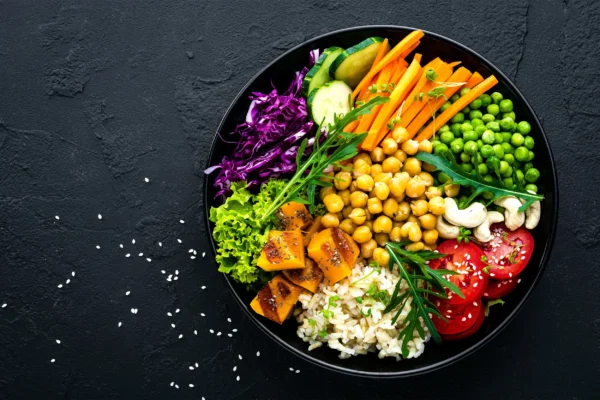Introduction:
LCHF Diet Embarking on a transformative weight loss journey can be both exciting and challenging. The Low-Carb, High-Fat (LCHF) diet has gained immense popularity as an effective approach to shedding unwanted pounds and achieving sustainable health. In this comprehensive guide, we’ll delve into the intricate science behind the LCHF diet, exploring how it masterfully reduces insulin levels, thereby transforming the body into a highly efficient fat-burning machine. Additionally, we’ll provide invaluable tips to ensure your resounding success on this enlightening dietary path.
The Science Behind LCHF:
1. Understanding the Basics
The LCHF diet operates on a beautifully simple principle: by strategically reducing carbohydrate intake and elevating the consumption of nutrient-dense healthy fats and proteins, you shift your body’s primary energy source from glucose to fat. Carbohydrates, the body’s typical go-to for energy, are broken down into glucose upon ingestion, causing a subsequent surge in insulin levels. By strategically limiting carb intake, you exert control over insulin spikes, promoting a state of metabolic ketosis. In this state, the body adeptly and efficiently burns stored fat for energy, paving the way for consistent and sustainable weight loss.
2. Insulin Regulation
A pivotal aspect of the LCHF diet’s success lies in its profound impact on insulin levels. Lower carbohydrate intake leads to a reduction in insulin production, facilitating enhanced fat breakdown and utilization for energy. This intricate dance of reduced insulin levels is not merely about weight loss; it is a holistic approach to improving overall metabolic health. By effectively controlling insulin, the body becomes a finely tuned machine, efficiently tapping into its fat reserves, thus enabling a sustainable and transformative weight loss journey.
Building Blocks of the LCHF Diet:
1. Prioritize Protein
Protein emerges as a stalwart cornerstone of the LCHF diet, playing a multi-faceted role in muscle preservation, satiety, and overall metabolic function. Integrate a diverse range of lean protein sources, such as poultry, fish, tofu, and legumes, into your meals. Beyond supporting weight loss, these protein-rich foods contribute significantly to maintaining essential muscle mass, a key factor in overall health and metabolic vitality.
2. Embrace Healthy Fats
Contrary to outdated dietary dogma, healthy fats are not adversaries but allies in the LCHF journey. Avocados, olive oil, nuts, and fatty fish are exemplary sources of these beneficial fats that not only fuel sustained energy but also facilitate mental clarity and, most importantly, weight loss. Embrace these fats in moderation, understanding that their inclusion enhances the flavor of meals, rendering them more satisfying and reducing the inclination to overindulge.
3. Load Up on Vegetables
Vegetables, rich in fiber, essential nutrients, and low in carbohydrates, should be celebrated as vital contributors to the LCHF lifestyle. Non-starchy vegetables, including leafy greens, cruciferous varieties, and vibrant peppers, should form a substantial portion of your LCHF meals. The high fiber content not only aids digestion but also promotes a lasting feeling of fullness, ensuring a well-rounded nutrient intake crucial for sustained weight loss and overall well-being.
Practical Tips for Success:
1. Plan Your Meals
Effective meal planning is the bedrock of success when embracing the LCHF lifestyle. Structure your meals thoughtfully, maintaining a delicate balance of macronutrients. Incorporate a variety of proteins, healthy fats, and non-starchy vegetables to ensure a diverse and nutritionally rich diet. Planning ahead not only safeguards nutritional adequacy but also instills mindful decision-making, reducing the likelihood of succumbing to carb-heavy temptations.
2. Stay Hydrated
Hydration, often underestimated in weight loss journeys, emerges as a potent tool on the LCHF diet. A sufficient water intake positively impacts metabolism, aids in digestion, and contributes to overall well-being. Ensure a consistent consumption of water throughout the day, especially during the initial phases when the body adapts to the shift in dietary patterns.
3. Monitor Your Progress
Tracking progress is a motivational cornerstone on the LCHF journey. Beyond traditional weight measurements, consider embracing a holistic approach. Monitor key biomarkers such as blood sugar levels and cholesterol, celebrating non-scale victories such as increased energy levels, improved mental clarity, and an overall enhanced sense of well-being.
Overcoming Challenges:
1. Navigating Social Situations
Navigating social situations can present challenges, especially when dining out or attending gatherings. Arm yourself with knowledge about suitable food choices, and plan ahead whenever possible. Opt for protein-rich options and green vegetables, and don’t hesitate to customize your order to align with your dietary goals, ensuring that social experiences don’t derail your progress.
2. Dealing with Plateaus
Weight loss plateaus are a common concern in any journey. If you find your progress stalling, consider a comprehensive reassessment of your dietary choices and exercise routine. Introduce strategies such as intermittent fasting or adjust your macronutrient ratios, offering a dynamic approach to overcome plateaus and ensuring continuous success on your LCHF journey.
Conclusion:
The LCHF diet stands as a scientifically-backed and intricately woven approach to weight loss. By understanding the nuanced science, embracing the right foods, and incorporating practical tips into your daily routine, you unlock the full potential of the LCHF diet, paving the way for not just weight loss but a transformative lifestyle. Remember, this is not merely a diet; it’s a profound journey that can reshape your body, elevate your energy levels, and significantly improve your overall well-being. Embrace the LCHF lifestyle with knowledge, dedication, and the confidence that you are embarking on a path toward lasting health and vitality.
